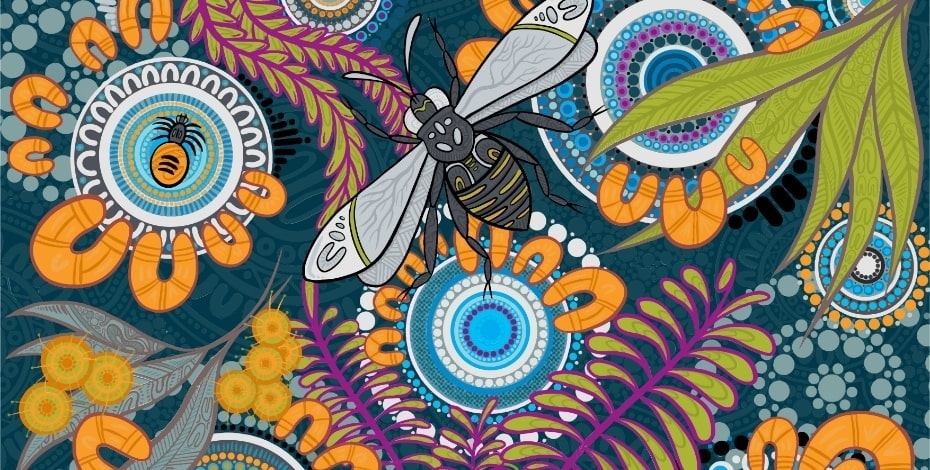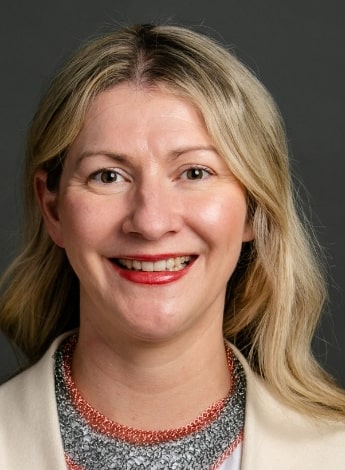
New online training focuses on Indigenous cultural safety

A new online course provides cultural safety training to make physiotherapy safer and more accessible for Aboriginal and Torres Strait Islander patients and physiotherapists. Anton Barnett-Harris, Kathryn Potter and Scott Willis explain why this course was developed and what it will offer.
What led to the development of ‘Cultural Safety Training for Physiotherapists’?
Anton: The Australian Physiotherapy Council (the Council) is responsible for assessing physiotherapists with overseas qualifications who are seeking to be registered and to join the physiotherapy workforce in Australia.
We identified a need to provide these physiotherapists with training about Australia’s Indigenous Peoples and to convey that Australian physiotherapists need to be culturally safe and respectful when providing physiotherapy services to Indigenous patients.
The Council partnered with Indigenous physiotherapists and educators at the University of Melbourne to develop the cultural safety training program, which was originally designed for overseas physiotherapists.
Scott: The APA has always been committed to providing consistent, safe and effective training in cultural safety to ensure that our members have the tools to provide safe treatments for First Nations patients in the clinic and beyond.
Arming all our members with the education, knowledge and strategies they need to do this is part of the APA’s Reconciliation journey.
What led to the ‘Cultural Safety Training for Physiotherapists’ course being provided for Australian physiotherapists through the APA?
Anton: Over the past few years, there has been an increasing expectation by the Australian community and Ahpra that all healthcare practitioners will be able to deliver healthcare services in culturally safe ways.
Through the Council’s role in accrediting entry-level physiotherapy programs at Australian universities, we’ve seen the development of physiotherapy courses as they embed cultural considerations into their curriculum.

Anton Barnett-Harris, CEO of the Australian Physiotherapy Council.
This is vitally important for future physiotherapists graduating from these programs and the Council and the APA recognise the need to offer existing physiotherapists opportunities to grow their own cultural competency.
Extending the Council’s cultural safety training program to APA members was a logical pathway for increasing cultural safety in the physiotherapy workforce, both for practitioners and for patients.
Scott: When the APA, the Council, the Council of Physiotherapy Deans Australia and New Zealand and Ahpra met to discuss important profession-wide issues, we recognised increasing practitioner cultural safety as critical.
From there, we agreed to consider using the existing cultural safety program for overseas-qualified physiotherapists as a foundation for APA members.
Which organisations were involved in creating and reviewing the course and how were Aboriginal and Torres Strait Islander Peoples involved throughout the development?
Anton: The original authors of the cultural safety training course were from the University of Melbourne and included Indigenous representatives and academics, physiotherapy department educators and teaching and learning staff, with the Council providing insights.
Since the program’s launch, numerous Indigenous stakeholders have reviewed it and provided feedback to keep improving it.
Kathryn: The original authors—Joanne Bolton, Dr Rachel Toovey and Professor Louisa Remedios—worked with a First Nations Advisory Group.
This group included Associate Professor Shawana Andrews, Professor Shaun Ewen and Associate Professor Michael Reynolds.
The review panel members in 2022 were two Aboriginal women, Ellie White and myself.
Scott: The Council was the original founder of the package, with the assistance of University of Melbourne First Nations physiotherapists including engaged APA members Kathryn Potter and Michael Reynolds.
At the APA, we wanted to ensure that the cultural safety package is consistent with our own Reconciliation Action Plan, our cultural awareness and our professional journey within this space.
Who is this course recommended for and why is it important?
Anton: The program has been developed specifically for physiotherapists working within the Australian healthcare environment.
Understanding and appreciating Indigenous Peoples’ cultural considerations enables physiotherapists to provide healthcare that is culturally safe and encourages Indigenous patients to access physiotherapy services.

Kathryn Potter, chair of the APA's National Aboriginal and Torres Strait Islander Health Committee.
Kathryn: This course is recommended for all physiotherapists.
It is important not only for assisting clinicians to provide optimal patient care but also as a means of reducing racism within workplaces for all employees.
Scott: As part of the APA’s strategic plan, we wanted to ensure that every physiotherapist has access to the tools and resources necessary to understand Aboriginal and Torres Strait Islander cultural requirements.
This will help all our members to have cultural awareness when treating First Nations Peoples, to achieve optimal outcomes and to contribute to closing the gap on health and social outcomes.
What does it mean for physiotherapists to provide culturally safe care?
Anton: When the Council has consulted with respected Indigenous voices in education and healthcare, we’ve learnt that when healthcare is delivered in culturally safe ways, the patient can express how they need to be treated, will feel safe within that treatment context and is likely to return to receive further treatment.
Kathryn: To me this means providing care that a patient, their family and their community feel safe in seeking out and participating in.
This ultimately improves access to appropriate and effective care for Aboriginal and Torres Strait Islander Peoples.
Scott: To provide anyone with a safe area and treatment pathway, you must be conscious of cultural considerations.
This training package will make physiotherapists aware of some sensitivities and help them understand how to make First Nations Peoples feel welcome within their clinic.
It is an opportunity to improve the patient experience so that all Australians feel safe and respected within a physiotherapy department.
If Aboriginal and Torres Strait Islander Peoples don’t have access to culturally safe healthcare, what are the likely outcomes?
Anton: Without culturally safe healthcare, health inequities and disparities between Indigenous and non-Indigenous Peoples will continue.
The Australian physiotherapy profession has an ethical and moral responsibility to participate in positive social change when it comes to Aboriginal and Torres Strait Islander Peoples’ health.
Kathryn: To put it simply, we will continue to see poor health and wellbeing outcomes and will be unsuccessful in closing the health gap, failing to meet the needs of Aboriginal and Torres Strait Islander Peoples and to recognise their basic human rights of survival, dignity and wellbeing.
Scott: If we don’t have culturally safe healthcare for First Nations Peoples, we will see health outcomes deteriorate and the gap in health and social outcomes widen.
This would place a significant burden on the health system and make it more difficult for First Nations Peoples to access the effective healthcare that all Australians deserve.
Aboriginal and Torres Strait Islander physiotherapists are an integral part of the workforce. What does this course mean for them?
Kathryn: I hope it will mean that Aboriginal and Torres Strait Islander Peoples can enter the healthcare workforce with some confidence that the other staff understand the importance of practising culturally safe care.

Scott Willis, APA National President.
Improving education and allyship within the health workforce makes healthcare a place where Aboriginal and Torres Strait Islander Peoples feel safe, comfortable, valued and respected and want to work.
Scott: This course demonstrates that the APA and Australian physiotherapists are serious about ensuring that all Australians can work safely within any healthcare organisation and not be subjected to racism and that physiotherapy is a safe profession that cares about their health and wellbeing and that of their mobs.
What kinds of skills, knowledge and new perspectives do you expect participants to take away from this course?
Anton: Depending on participants’ previous involvement in cultural safety training, it’s expected that they will deepen their understanding of the history and contemporary culture of Indigenous Peoples and learn to recognise racist or culturally unsafe behaviours and to apply the principles of culturally safe practice in a range of physiotherapy clinical settings.
Kathryn: Everyone is on their own journey in this space.
The package allows for additional reading and provides links to resources for those who are ready to go further.
This course will provide a foundation and is a place for physiotherapists to explore particular reputable sources for lifelong learning.
I also hope it helps physiotherapists to start thinking about how they will connect with their local communities.
Scott: This course will give participants the skills and knowledge to start or continue their own personal and professional journey in relation to Reconciliation and cultural safety within healthcare.
It will ensure that they see the contribution cultural safety can make to health and social outcomes and its role in closing the gap for First Nations Peoples.
‘Cultural Safety Training for Physiotherapists’ is available online, with a monthly intake, and takes approximately
five hours to complete. Click here for more information and to register.
>> Anton Barnett-Harris is CEO of the Australian Physiotherapy Council and is passionate about innovation and driving cultural change. Anton contributes to a number of committees and working groups in healthcare.
>> Kathryn Potter APAM is the chair of the APA’s National Aboriginal and Torres Strait Islander Health Committee. She is a proud Kamilaroi woman; an advanced practice physiotherapist at Logan Hospital, Queensland; and the managing director and co-founder of Physiotherapy Innovations.
>> Scott Willis APAM is the first Indigenous National President of the Australian Physiotherapy Association. He is a proud Palawa man from the North West Coast of Tasmania and is very keen to ensure that we have a physiotherapy profession that will be culturally safe and fully accessible to all Australians.
Main image: The APA’s Reconciliation Action Plan artwork created by Aboriginal artist Jakeob Watson.
© Copyright 2025 by Australian Physiotherapy Association. All rights reserved.





